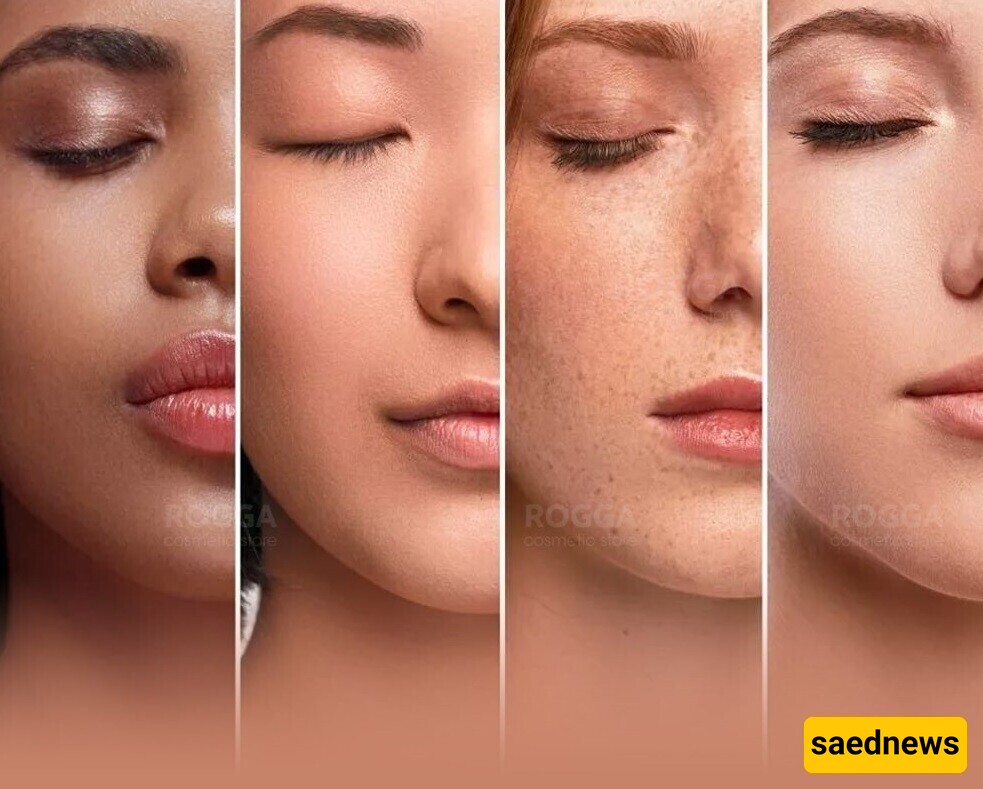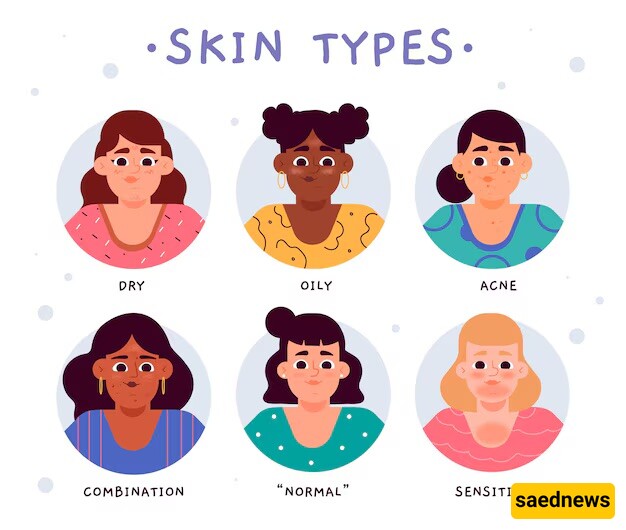Generally, there are five main skin types: normal, dry, oily, combination, and sensitive. While genetics largely determine your skin type, daily habits, skincare routines, and environmental factors can also influence changes in your skin. If you want to learn how to identify your skin type at home and take care of it properly, keep reading.

According to Saed News Family Magazine, understanding your skin type is crucial for addressing concerns such as acne, dryness, and cleansing. Many people have misconceptions about their skin type due to advice from beauty salons, social media, or friends. To get accurate results, it's best to test your skin yourself using the following methods.
There are two reliable methods to determine your skin type at home:
Wash your face with a gentle cleanser and pat it dry with a soft towel.
Leave your skin untouched for 30 minutes—do not apply any creams, serums, or toners.
Examine your forehead, nose, cheeks, and chin for shine.
After another 30 minutes, notice how your skin feels—especially when smiling or raising your eyebrows.
If your skin feels tight and dry, you likely have dry skin.
If only your forehead, nose, and chin (T-zone) are shiny, you have combination skin.
If your entire face is shiny, you have oily skin.
If your skin looks balanced—not too dry or too oily—you have normal skin.
Wash your face and gently pat away excess water with a soft towel (avoid rubbing).
Wait 45–60 minutes without applying any skincare products.
Press a clean tissue against different parts of your face and check for oil stains under a light.
If the tissue has oil stains from all areas, you have oily skin.
If only some areas, like the forehead or nose, are oily, you have combination or normal skin.
If the tissue remains dry, you have dry skin.

Neither too oily nor too dry.
Pores are small and barely visible.
Skin rarely looks shiny or flaky.
Minimal wrinkles, even skin tone, and few blemishes.
Care Tips:
Use gentle cleansers and lightweight moisturizers.
Avoid overly oily or drying skincare products.
Always apply sunscreen to maintain healthy skin.
Often feels tight and rough.
Prone to redness, flaking, and irritation.
Pores are almost invisible.
More prone to fine lines and sensitivity.
Care Tips:
Use hydrating cleansers and rich moisturizers.
Avoid harsh exfoliants and alcohol-based products.
Apply a nourishing night cream to restore moisture.
Produces excess oil, leading to shine and breakouts.
Large, visible pores.
Prone to acne, blackheads, and whiteheads.
Why is skin oily?
Genetics: Overactive oil glands inherited from family.
Hormones: Increased androgen levels trigger more oil production.
Care Tips:
Use oil-free cleansers and lightweight moisturizers.
Exfoliate regularly to prevent clogged pores.
Avoid heavy, greasy skincare products.
A mix of dry and oily areas.
T-zone (forehead, nose, chin) is usually oily, while cheeks are dry.
Requires careful balancing of skincare.
Care Tips:
Use gentle cleansers to avoid over-drying or over-hydrating.
Apply different products to different areas as needed.
Avoid skincare that excessively mattifies or hydrates.
Each skin type has unique needs, and using the right skincare routine can help maintain a healthy, glowing complexion. By identifying your skin type correctly, you can choose products that enhance your skin's natural balance and prevent common issues like acne, dryness, and sensitivity.

